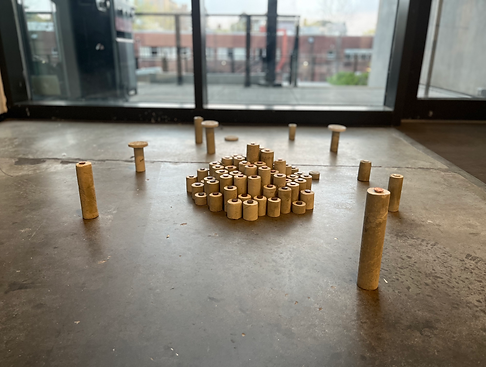Quantum Pillars

Quantum Pillars is a sculptural installation composed of concrete columns arranged at varying heights, determined by data from an IBM quantum computer. The work explores the nature of randomness and the translation of quantum phenomena into tangible, human-scale form. In classical physics, randomness stems from complexity—systems may seem unpredictable but remain fully determined by their initial conditions. Quantum mechanics is fundamentally different: quantum events have no hidden cause and no predetermined outcome, embodying true randomness.

By encoding the heights of the pillars with quantum-generated values, the piece serves as a physical bridge between the quantum and classical worlds. It invites viewers to reflect on questions of determinism, chance, and free will: if our universe has randomness woven into its fabric, what does that mean for predictability, causality, and the extent to which we can shape our own future? The installation transforms the abstract mathematics of quantum mechanics into a permanent, concrete expression—capturing a moment of quantum uncertainty in an unchanging architectural form. To see a similar art project where I generated the quantum values myself using a single photon source, polarizing filers, and sapphire beam splitters, click here.
Above is a visual representation of the code used to produce a 1 or a 0 at equal probabilities on one of IBM's quantum computers. It transforms a 0 state into a superposition of the 0 and 1 basis states. After measurement, the state collapses to one of these states, acting like a quantum coin flip. A penny flipped to heads or tails rests on the top of each pillar; which face up depends on whether the quantum value associated with the pillar is a 1 or a 0.
Fabrication





Sculptural Display




